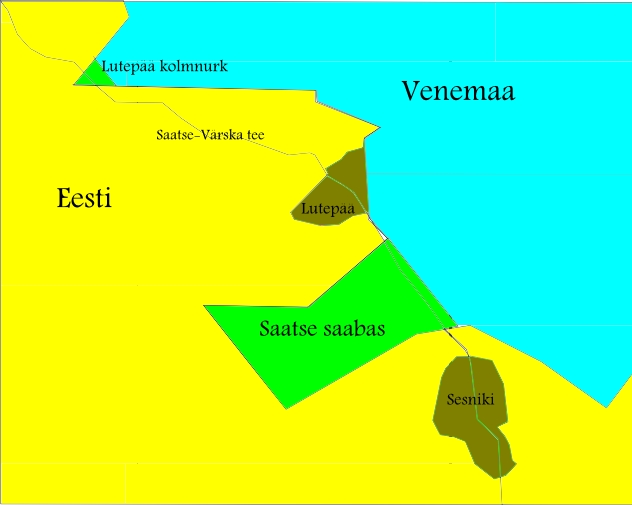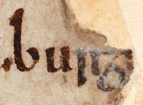|
Värska
Värska () is a small borough () in Setomaa Parish, Võru County in southeastern Estonia. At the 2021 Census, the settlement's population was 414. It is the most populous village of the Paris History Värska was first mentioned in written sources in 1585. Värska is the birthplace of the poet Paul Haavaoks (1924–1983). Geography Värska is located in the east of Võru County, near the border with Russia, 70 km southeast of Tartu. The town stands on the Gulf of Värska, part of Lake Pihkva. Landmarks The parish is associated with the Seto Museum of Farming, which opened in 1998. Also located in southern Värska in the village of Verhulitsa is the holy tree A sacred tree or holy tree is a tree which is considered to be sacred, or worthy of spiritual respect or reverence. Such trees appear throughout world history in various cultures including the ancient Hindu mythology, Greek, Celtic and Germanic m ... Verhulitsa Laudsi Pettäi. See also * Saatse Boot References E ... [...More Info...] [...Related Items...] OR: [Wikipedia] [Google] [Baidu] |
Saatse Boot
The Saatse Boot (; ) is a boot-shaped area of Russian territory of that extends through the road number 178 between the Estonian villages of Lutepää and Sesniki (themselves between the larger settlement Värska and village of Saatse) in Setomaa Parish. Background The current Estonian–Russian border in Setomaa was established in 1944 when most of the territory of Estonian Petseri County was transferred to the Russian Soviet Federative Socialist Republic. During the Soviet era, it was the boundary between two constituent republics of the Soviet Union. Estonia regained independence in 1991 and since then the same border (officially referred to as 'line of control' by Estonia) has been the international border between the two countries. The border is oddly shaped because the area was historically owned by a farm at the Russian village of Gorodishche located further east. Värska–Saatse Road The road between the settlements of Värska and Saatse goes through the S ... [...More Info...] [...Related Items...] OR: [Wikipedia] [Google] [Baidu] |
Municipalities Of Estonia
A municipality (, plural ) is the smallest administrative subdivision of Estonia. Each municipality is a unit of self-government with its representative and executive bodies. The municipalities in Estonia cover the entire territory of the country. Municipalities in Estonia are of two types: *Urban municipalities or towns (, singular ) *Rural municipalities or Parish (administrative division), parishes (, singular ). There is no other status distinction between them. Municipalities may contain one or several Populated places in Estonia, settlements. All but 5 urban municipalities (Haapsalu (urban municipality), Haapsalu, Narva-Jõesuu (urban municipality), Narva-Jõesuu, Paide (urban municipality), Paide, Pärnu (urban municipality), Pärnu and Tartu (urban municipality), Tartu) plus 1 rural municipality (Ruhnu Parish, Ruhnu) contain only one settlement. As of 2017, there are no longer any "borough-parishes", i.e. rural municipalities with only one borough-type settlement. Ru ... [...More Info...] [...Related Items...] OR: [Wikipedia] [Google] [Baidu] |
Seto Museum Of Farming
The Seto Museum of Farming is a museum of the Seto people's farming culture and practices, located in the Värska Parish, Põlva County, Estonia. It was first opened in 1998. General The museum showcases traditional farm construction, ancient work tools, and craftwork. It also organizes Seto cultural events which present Seto folklore and traditions, such as "Lace days" (Estonian Estonian may refer to: * Something of, from, or related to Estonia, a country in the Baltic region in northern Europe * Estonians, people from Estonia, or of Estonian descent * Estonian language * Estonian cuisine * Estonian culture See also ..., pitsipäevad) where visitors have the opportunity to watch and help create colorful Seto lacework among other traditions. References External links Seto Society Tourist Attractions in Põlva County Agriculture museums in Estonia {{Estonia-museum-stub ... [...More Info...] [...Related Items...] OR: [Wikipedia] [Google] [Baidu] |
Setomaa Parish
Setomaa Parish () is a rural municipality of Estonia, in Võru County. It has a population of 2,849 (as of 1 January 2022) and an area of 463.1 km2. Demographics Population in the municipality: * 2000: 4,206 * 2011: 2,990 * 2022: 2,849 Settlements There is one small borough (''alevik'') Värska and 156 villages (''küla'') in Setomaa Parish. The villages are: Ala-Tsumba, Antkruva, Audjassaare, Beresje, Ermakova, Helbi, Hilana, Hilläkeste, Hindsa, Holdi, Härmä, Ignasõ, Igrise, Jaanimäe, Juusa, Jõksi, Järvepää, Kahkva, Kalatsova, Kangavitsa, Karamsina, Karisilla, Kasakova, Kastamara, Keerba, Kiiova, Kiislova, Kiksova, Kitsõ, Klistina, Koidula, Kolodavitsa, Kolossova, Koorla, Korela, Korski, Kossa, Kostkova, Kremessova, Kriiva, Kuigõ, Kuksina, Kundruse, Kusnetsova, Kõõru, Käre, Küllätüvä, Laossina, Leimani, Lepä, Lindsi, Litvina, Lobotka, Lutepää, Lutja, Lütä, Lüübnitsa, Maaslova, Marinova ... [...More Info...] [...Related Items...] OR: [Wikipedia] [Google] [Baidu] |
Paul Haavaoks
Paul Haavaoks (12 April 1924 Värska, Setumaa – 30 September 1983) was an Estonian poet. He had several jobs. For some time, he was a member of the Saatse Parish executive committee. He was also a member of the editorial office of the newspaper ''Koit'' in Põlva Põlva (; ) is a town in southeastern Estonia, the county seat of Põlva County, and the centre of Põlva Parish. Põlva is home for the Intsikurmu Music Festival Grounds, which regularly hosts concerts and summer activities, situated in a sm .... He started working as a professional writer in 1955. Selected works * 1970: ''Sipelgarada'' (Ants' Trail), poetry collection * 1974: ''Eelkarastumine'' (Prior Tempering), memoir * 1977: ''Kanajala linnajagu'' (The Kanajala District), poetry collection References 1924 births 1983 deaths People from Setomaa Parish Communist Party of the Soviet Union members Estonian male poets 20th-century Estonian poets Estonian children's writers {{Estonia-writer-stu ... [...More Info...] [...Related Items...] OR: [Wikipedia] [Google] [Baidu] |
Estonia
Estonia, officially the Republic of Estonia, is a country in Northern Europe. It is bordered to the north by the Gulf of Finland across from Finland, to the west by the Baltic Sea across from Sweden, to the south by Latvia, and to the east by Russia. The territory of Estonia consists of the mainland, the larger islands of Saaremaa and Hiiumaa, and over 2,300 other islands and islets on the east coast of the Baltic Sea. Its capital Tallinn and Tartu are the two largest List of cities and towns in Estonia, urban areas. The Estonian language is the official language and the first language of the Estonians, majority of its population of nearly 1.4 million. Estonia is one of the least populous members of the European Union and NATO. Present-day Estonia has been inhabited since at least 9,000 BC. The Ancient Estonia#Early Middle Ages, medieval indigenous population of Estonia was one of the last pagan civilisations in Europe to adopt Christianity following the Northern Crusades in the ... [...More Info...] [...Related Items...] OR: [Wikipedia] [Google] [Baidu] |
Pskovsky Uyezd
Pskovsky Uyezd (''Псковский уезд'') was one of the subdivisions of the Pskov Governorate of the Russian Empire. It was situated in the northwestern part of the governorate. Its administrative centre was Pskov. Demographics At the time of the Russian Empire Census of 1897, Pskovsky Uyezd had a population of 103,300. Of these, 87.5% spoke Russian, 7.8% Estonian, 1.7% Latvian, 0.9% Polish, 0.9% German, 0.7% Yiddish Yiddish, historically Judeo-German, is a West Germanic language historically spoken by Ashkenazi Jews. It originated in 9th-century Central Europe, and provided the nascent Ashkenazi community with a vernacular based on High German fused with ..., 0.3% Finnish, 0.1% Romani and 0.1% Belarusian as their native language. Демоскоп Weekly - Приложение. Справочник статистических � ... [...More Info...] [...Related Items...] OR: [Wikipedia] [Google] [Baidu] |
Boroughs And Small Boroughs In Estonia
A borough is an administrative division in various English-speaking countries. In principle, the term ''borough'' designates a self-governing walled town, although in practice, official use of the term varies widely. History In the Middle Ages, boroughs were settlements in England that were granted some self-government; burghs were the Scottish equivalent. In medieval England, boroughs were also entitled to elect members of parliament. The use of the word ''borough'' probably derives from the burghal system of Alfred the Great. Alfred set up a system of defensive strong points ( Burhs); in order to maintain these particular settlements, he granted them a degree of autonomy. After the Norman Conquest, when certain towns were granted self-governance, the concept of the burh/borough seems to have been reused to mean a self-governing settlement. The concept of the borough has been used repeatedly (and often differently) throughout the world. Often, a borough is a single town with ... [...More Info...] [...Related Items...] OR: [Wikipedia] [Google] [Baidu] |
Holy Tree
A sacred tree or holy tree is a tree which is considered to be sacred, or worthy of spiritual respect or reverence. Such trees appear throughout world history in various cultures including the ancient Hindu mythology, Greek, Celtic and Germanic mythologies and is central to the beliefs of The Church of Jesus Christ of Latter-day Saints. They also continue to hold profound meaning in contemporary culture in places like Japan (''shinboku''), Korea (''dangsan namu''), India (bodhi tree), and the Philippines, among others. Tree worship is core part of religions which include aspects of animism as core elements of their belief, which is the belief that trees, forests, rivers, mountains, etc. have a life force ('anime', i.e., ''alive''). An example of the continued importance of sacred trees in contemporary urban culture is the 700-year old camphor growing in the middle of Kayashima Station. Locals protested against moving the tree when the railway station had to be expanded, so the s ... [...More Info...] [...Related Items...] OR: [Wikipedia] [Google] [Baidu] |
Verhulitsa
Verhulitsa is a village in Setomaa Parish, Võru County in southeastern Estonia Estonia, officially the Republic of Estonia, is a country in Northern Europe. It is bordered to the north by the Gulf of Finland across from Finland, to the west by the Baltic Sea across from Sweden, to the south by Latvia, and to the east by Ru .... (retrieved 27 July 2021) References Villages in Võru County {{Võru-geo-stub ... [...More Info...] [...Related Items...] OR: [Wikipedia] [Google] [Baidu] |
Russia
Russia, or the Russian Federation, is a country spanning Eastern Europe and North Asia. It is the list of countries and dependencies by area, largest country in the world, and extends across Time in Russia, eleven time zones, sharing Borders of Russia, land borders with fourteen countries. Russia is the List of European countries by population, most populous country in Europe and the List of countries and dependencies by population, ninth-most populous country in the world. It is a Urbanization by sovereign state, highly urbanised country, with sixteen of its urban areas having more than 1 million inhabitants. Moscow, the List of metropolitan areas in Europe, most populous metropolitan area in Europe, is the capital and List of cities and towns in Russia by population, largest city of Russia, while Saint Petersburg is its second-largest city and Society and culture in Saint Petersburg, cultural centre. Human settlement on the territory of modern Russia dates back to the ... [...More Info...] [...Related Items...] OR: [Wikipedia] [Google] [Baidu] |
Lake Peipus
Lake Peipus is the largest trans-boundary lake in Europe, lying on the international border between Estonia and Russia. The lake is the fifth-largest in Europe after Lake Ladoga and Lake Onega (in Russia), Lake Vänern (in Sweden), and Lake Saimaa (in Finland). It covers , and it has an average depth of , the deepest point being .Чудско-Псковское озеро Russian lakes with area of more than 350 km² ... [...More Info...] [...Related Items...] OR: [Wikipedia] [Google] [Baidu] |




